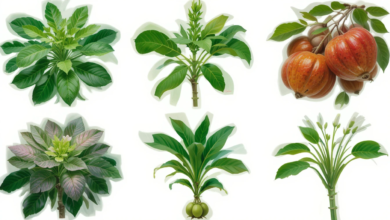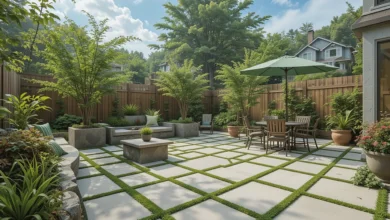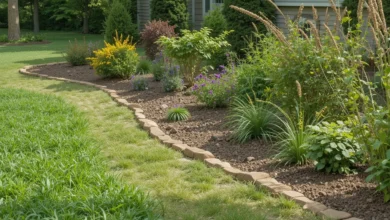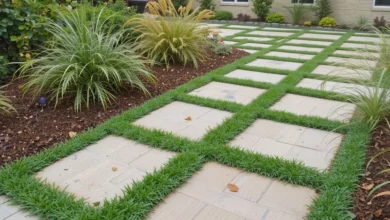10 Best Border Plants for a Stunning Garden Edge
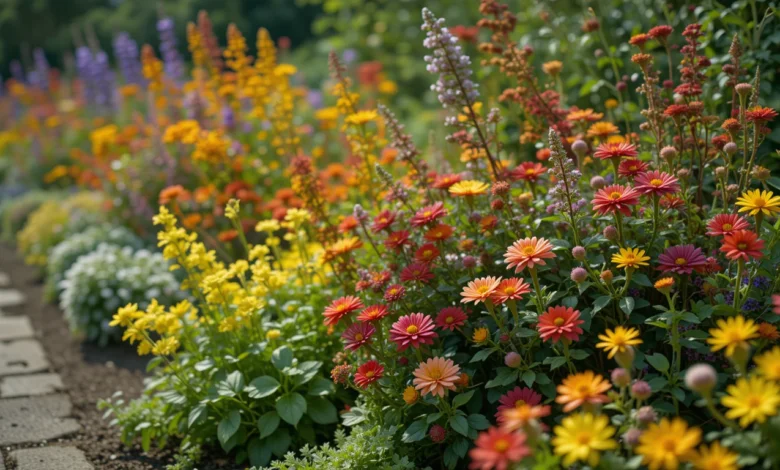
When you think of a garden, one of the first things that may come to mind is the colorful flowers, leafy plants, and maybe even some vegetables growing in neat rows. But have you ever considered the border plants that can truly complete the look of your garden? Border plants are the plants that line the edges or borders of a garden bed, creating a natural frame that adds beauty and structure to your landscape.
In this article, we’ll introduce you to some of the best border plants for your garden. Whether you’re designing a flower bed, vegetable patch, or a simple border along a pathway, these plants will help bring your garden to life. We’ll also share tips on how to care for them, so you can enjoy their beauty all year long!
Why Use Border Plants in Your Garden?
Before we dive into the best border plants, it’s important to understand why border plants are so useful in a garden. Here are a few reasons to consider adding them to your outdoor space:
- Create Definition: Border plants help define the edges of your garden, making the space feel more organized and tidy.
- Add Color and Texture: With the right plants, borders can add beautiful color, texture, and even fragrance to your garden.
- Hide Fences and Walls: Border plants can cover up less attractive features like fences, walls, or garden structures, making your garden look more natural.
- Prevent Soil Erosion: Some border plants, like groundcovers, help keep the soil in place and prevent erosion, especially in sloped gardens.
What Makes a Good Border Plant?
When choosing border plants, you should keep a few key factors in mind:
- Height and Spread: Border plants typically stay shorter, providing a neat edge without overwhelming the space. Some are low-growing, while others can stand taller to create a layered effect.
- Hardiness: Border plants should be able to thrive in your climate. Choose plants that are suitable for your hardiness zone to ensure they grow well.
- Maintenance: Some plants are easy to care for, while others require more attention. If you’re looking for low-maintenance options, choose plants that are drought-tolerant and disease-resistant.
- Color and Texture: Consider the overall look of your garden and choose border plants that complement the colors and textures of your main plants.
Best Border Plants for Your Garden
Now that you know why border plants are important, let’s take a look at some of the best options you can include in your garden. These plants are easy to grow, low-maintenance, and perfect for creating a beautiful garden border.
1. Lavender (Lavandula)
Lavender is a fragrant and colorful option that makes an excellent border plant. With its long spikes of purple flowers and silvery-green foliage, it adds both texture and fragrance to any garden. Lavender is also a great choice for pollinators, attracting bees and butterflies.
- Height: 12–36 inches (30–90 cm)
- Best for: Full sun, well-drained soil
- Benefits: Drought-tolerant, attracts pollinators, low-maintenance
2. Boxwood (Buxus)
Boxwood is a classic choice for creating neat, low-maintenance borders. It has small, glossy green leaves and can be shaped into hedges, making it perfect for a formal garden. It’s also evergreen, so it provides year-round greenery.
- Height: 1–3 feet (30–90 cm) depending on variety
- Best for: Partial to full sun, well-drained soil
- Benefits: Low-maintenance, evergreen, easily shaped
3. Marigold (Tagetes)
Marigolds are colorful, cheerful flowers that make a bold statement in any border. Available in shades of orange, yellow, and red, marigolds add a pop of color to your garden. They also have pest-repelling properties, making them great companion plants.
- Height: 8–18 inches (20–45 cm)
- Best for: Full sun, moderately fertile soil
- Benefits: Pest-repellent, colorful, easy to grow
4. Hostas
Hostas are shade-loving plants that work well in borders where there’s less sunlight. With their large, lush leaves and tall flower spikes, hostas create a soft, natural edge. They’re available in a variety of colors, from green to blue and yellow, so they can fit in with many different garden styles.
- Height: 12–36 inches (30–90 cm)
- Best for: Partial to full shade, moist, well-drained soil
- Benefits: Low-maintenance, shade-tolerant, attractive foliage
5. Creeping Thyme (Thymus serpyllum)
Creeping thyme is a low-growing groundcover that’s perfect for filling in gaps along garden borders. It has small, aromatic leaves and produces tiny purple or pink flowers in late spring and summer. It’s great for weed suppression and works well between stepping stones or in rock gardens.
- Height: 2–4 inches (5–10 cm)
- Best for: Full sun, well-drained soil
- Benefits: Drought-tolerant, fragrant, pest-repellent
6. Daylilies (Hemerocallis)
Daylilies are vibrant, hardy plants that bloom in many different colors. They have long, slender leaves and produce large, showy flowers that last for a single day but are replaced by new blooms throughout the growing season. They work well in full sun and can tolerate a variety of soil conditions.
- Height: 18–36 inches (45–90 cm)
- Best for: Full sun to partial shade, well-drained soil
- Benefits: Easy to grow, colorful, low-maintenance
7. Sweet Alyssum (Lobularia maritima)
Sweet alyssum is a low-growing border plant that spreads quickly, creating a dense, mat-like groundcover. It produces small, fragrant flowers in shades of white, purple, or pink and attracts pollinators like bees and butterflies. This plant works well in containers or as an edging plant in beds.
- Height: 4–8 inches (10–20 cm)
- Best for: Full sun to partial shade, well-drained soil
- Benefits: Fragrant, attracts pollinators, easy to grow
8. Black-eyed Susan (Rudbeckia hirta)
Black-eyed Susan is a classic border plant known for its bright, golden-yellow flowers and dark centers. It blooms in late summer to fall and attracts bees and butterflies. It’s a hardy, low-maintenance plant that works well in full sun.
- Height: 18–36 inches (45–90 cm)
- Best for: Full sun, well-drained soil
- Benefits: Drought-tolerant, colorful, attracts pollinators
9. Lavender Cotton (Santolina chamaecyparissus)
Lavender cotton, also known as Santolina, has silvery-gray foliage and small yellow flowers. It’s perfect for a sunny border and adds a nice contrast to green-leaved plants. This plant is also drought-tolerant, making it a great choice for dry, hot climates.
- Height: 12–24 inches (30–60 cm)
- Best for: Full sun, well-drained soil
- Benefits: Drought-tolerant, aromatic, low-maintenance
10. Heuchera (Coral Bells)
Heuchera, also known as coral bells, is a versatile border plant with colorful, heart-shaped leaves in shades of purple, red, green, and silver. It produces small, bell-shaped flowers on tall spikes and adds a touch of elegance to your garden’s edges.
- Height: 12–18 inches (30–45 cm)
- Best for: Partial to full shade, moist, well-drained soil
- Benefits: Colorful foliage, shade-tolerant, low-maintenance
How to Care for Border Plants
To keep your border plants healthy and vibrant, follow these essential care tips:
- Watering: Most border plants need regular watering, especially during hot weather. Be sure not to overwater; many border plants prefer well-drained soil and do not like to sit in water.
- Fertilizing: Use a balanced fertilizer to provide essential nutrients, especially during the growing season. However, avoid over-fertilizing, as it can lead to excessive foliage growth with fewer flowers.
- Pruning: Some border plants, like boxwood and lavender, benefit from occasional pruning to maintain their shape and encourage new growth. Remove dead or diseased branches to keep the plants healthy.
- Mulching: Applying a layer of mulch around your border plants helps retain moisture, suppresses weeds, and keeps the soil temperature stable.
Conclusion
Border plants are an excellent way to enhance the beauty and structure of your garden. Whether you want vibrant flowers, fragrant plants, or low-maintenance groundcovers, there’s a perfect border plant for every garden style. From lavender to creeping thyme, these plants will help you create a stunning and organized garden edge. Follow the care tips in this guide, and you’ll have a garden that’s both beautiful and functional all year long!

